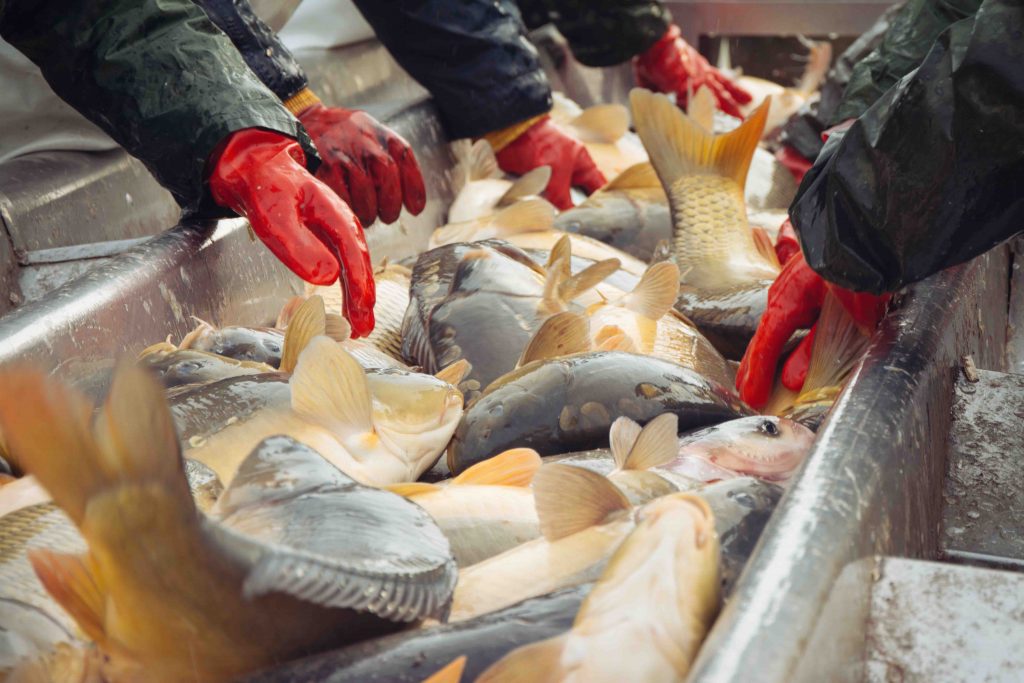
Lessons from a pandemic: We need domestic aquaculture as never before
April 1, 2020
By Jeanne McKnight and John Dentler
The restrictions we’re seeing on the movement of people and products across borders bolster the case for a stronger domestic aquaculture and we need to act now, says the Northwest Aquaculture Alliance
 Support for aquaculture development at the local, state, and federal level is urgently needed (Credit: Adobe Stock)
Support for aquaculture development at the local, state, and federal level is urgently needed (Credit: Adobe Stock) On the eve of the passage of H.R. 748, the Coronavirus Aid, Relief, and Economic Security (CARES) Act, some 200 U.S. companies and trade associations — representing wild and farmed seafood producers, large and small — in a rare show of unity, rallied behind an urgent communiqué to Congress and to the Administration requesting relief for an industry that saw its main market, foodservice (restaurants and institutional operators), disappear almost overnight.
Specifically, the industry requested Congress to:
1. Maintain USDA’s Section 32 Funding Levels and expand these to include “an additional appropriation of at least $2.0 billion for Section 32 activities that directly support the supply chain of domestically produced seafood to end consumers.” (Section 32 provides for the purchase of high-quality food for the National School Lunch Program, the Commodity Food Program, the Emergency Food Assistance Program, and emergency food purchases for victims of natural disasters.)
2. Provide an initial $1.5 billion to the U.S. Department of Commerce to provide direct relief for fishery disasters caused by Federal, State, and Local government responses to COVID-19. In brief, this section asks Congress to trigger the Magnuson Stevens Fishery Conservation and Management Act (MSA) as well as sections of the Interjurisdictional Fisheries Act (IJFA) to permit the Secretary of Commerce to make funding available “as soon as practicable” to fishery and seafood businesses uniquely impacted by closure of restaurant and foodservice businesses. Part of this request also included a request to Congress to allow the Secretary of Commerce to waive certain requirements under MSA and IJFA so that injured business could quickly receive needed aid.
3. Appropriate a minimum of $500 million for the Department of Commerce, in consultation with the Department of Agriculture, to purchase surplus commercial seafood that can be shipped overseas or supplied to domestic organizations. This section essentially asks for direct government purchases for assisted living communities, hospitals, and other government programs, for example.
When the dust settled, an earmark of $300 million was inserted into the bill, aimed at fishing and aquaculture-related businesses “not otherwise covered by agricultural disaster assistance programs.” While the $300 million will help many businesses in the short-term, in the longer-term, the seafood industry, wild harvest and farmed producers alike, must strengthen domestic production and processing of seafood, given the emerging challenges of importing seafood when borders are tightening if not closing, and many companies are temporarily halting and/or delaying harvest and production.
Bottom line: If the COVID-19 pandemic is teaching us anything, it is that the United States needs to support seafood production as never before. And with the limited capacity of wild harvest to grow beyond its current yield, this supply — our food security — must come from aquaculture. That means all aquaculture — shellfish, seaweed/sea vegetables, and finfish (including land-based freshwater and marine, whether via net pens flow-through, RAS or partial-RAS).
As a side note, we find it curious that Sen. Maria Cantwell, D-WA, was originally “ok” with NOT specifying that the $300 million would include all forms of aquaculture, yet in her March 31, 2020 newsletter to constituents, she states that the $300 million is intended to support “shellfish aquaculture” rather than all forms of aquaculture. As of this writing, we are looking for clarity on this issue.
In short, support for aquaculture development at the local, state, and federal level is urgently needed, and needed now.
We at the Northwest Aquaculture Alliance (NWAA) believe it is time for the United States, specifically our West Coast region, to embrace aquaculture for its public health and economic development benefits, and as a food security strategy. We suggest it is time to take inventory of the many hurdles that regional aquaculture producers must leap — some redundant — to succeed.
Farming fish, shellfish, and seaweed also supports community economic development providing jobs in rural areas where they are direly needed.
In the United States, most people do not consume the amount of seafood needed for good health. A significant benefit of aquaculture is that it delivers a nutritious product that consumers can afford. One need only venture into a just about any store these days to see the price jump for farmed salmon (mostly from Norway and Chile) as much as $2/pound from pre-pandemic pricing. And a quick check of prices of new direct to consumer websites shows Alaska salmon to cost as high as $24/pound. Who in the era of layoffs can afford that?
Bottom line: If we are to continue to eat one of the most nutritionally beneficial and affordable foods available (and we all need the nutrients that seafood provides to keep our immune systems strong), we need to encourage, support, and foster domestic aquaculture — in all of its varieties — to take place in this country (and this state).
There has never been a more important mission.
John Dentler earned his JD from Seattle University, B.S. in Fisheries and M.S. in Ecology from U.C. Davis, and is president of the Northwest Aquaculture Alliance. He is also a senior adviser to Troutlodge, the world’s largest producer of eyed trout eggs. Each year Troutlodge produces and sells about 500 million live trout eggs worldwide.
Jeanne McKnight, Ph.D., has been involved in strategic communications and advocacy for the global seafood industry for more than 25 years, representing both the wild harvest and aquaculture sectors. A former communications director for the Global Aquaculture Alliance, Jeanne currently serves as Executive Director of NWAA.





